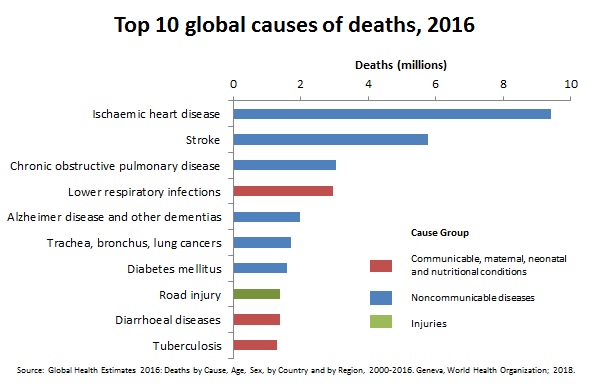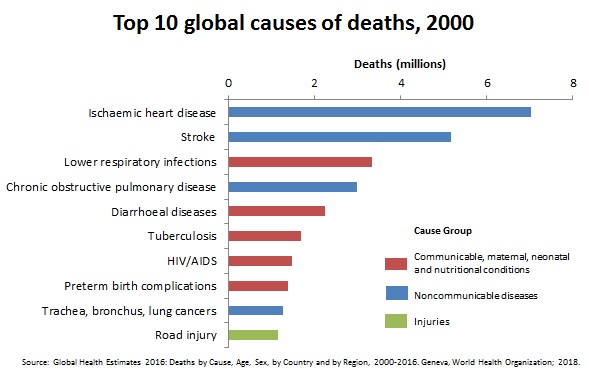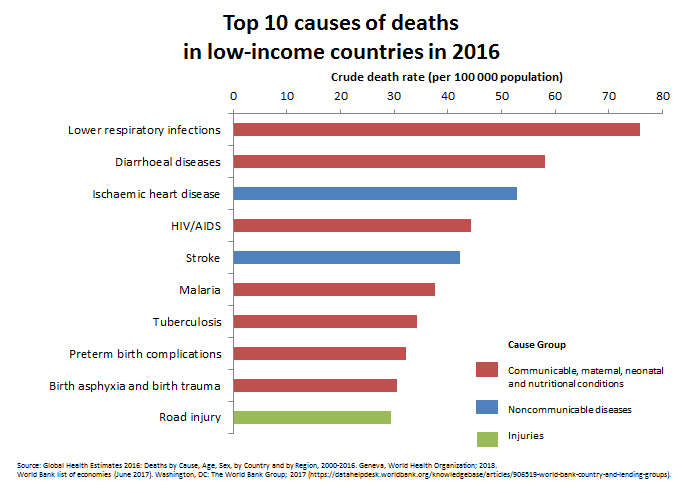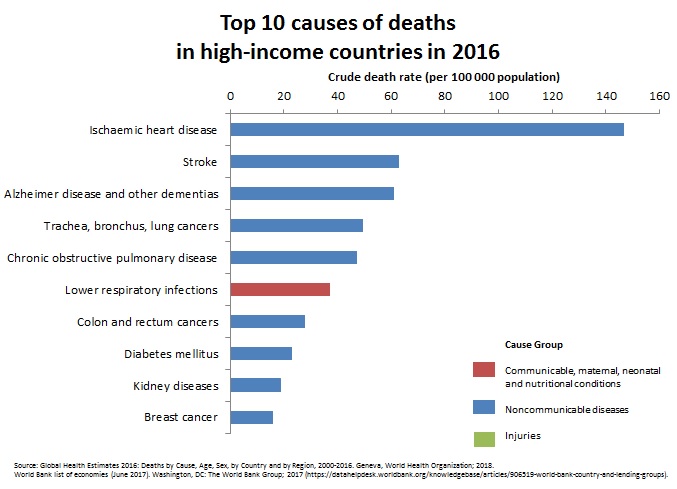Resources: Global burden and patterns of diseases
Epidemiology
Before examining individual disease groups, here are some ways of assessing the burden of disease. The burden of disease differs massively globally, and there has been a large amount of work to describe the burden. The Global Burden of Disease web site offers a comprehensive view, but you should also explore the World Bank Health site which includes many interesting indicators, and the World Health Organisation Countries site.
The World Health Organisation (WHO) site The top 10 causes of death shows some interesting information. You can see how the patterns of mortality have changed over time and also between the low- and high-income country groups.
 |
 |
 |
 |
Reprinted from The top 10 causes of death. Accessed June 10th, 2020.
A very good way to get into this topic is through some of these links which describe global burden of diseases:
To illustrate this further, you can use Gapminder to visualize the impact of child mortality and how it has changed over time.
Show World is an interactive map: "SELECT a subject from the top menu and watch the countries on the map change their size. Instead of land mass, the size of each country will represent the data for that subject --both its share of the total and absolute value."
Prevention and control
While epidemiology can measure the size and causes of the problem, interventions are required to reduce the extent and implications of the burden.
The US Centers for Disease Control and Prevention has a section on Global Health, which although US based makes the point that communicable diseases are a global issue: "Disease knows no borders. In today’s interconnected world, diseases can spread from an isolated, rural village to any major city in as little as 36 hours. The U.S. cannot protect its borders and the health of its citizens without addressing diseases elsewhere in the world. CDC works 24/7 to protect Americans and save lives around the world by detecting and controlling outbreaks at their source. In addition, CDC helps other countries increase their ability to prevent, detect, and respond to health threats on their own."
Health Trends in your region of interest
"The lottery of birth is responsible for much of who we are. If you were not born in the country you were, what would your life be like? Would you be the same person? IfItWereMyHome.com is your gateway to understanding life outside your home. Use the country comparison tool to compare living conditions in your own country to those of another. Start by selecting a region to compare on the map to the right, and begin your exploration."
- Look at the Global Burden of Disease web site which has a set of data visualisations on disability and death globally, from the Institute for Health Metrics. Play around with these tools to help you answer these questions:
b. This treemap is a good way of comparing different causes of death for different age groups.
We will look at five major categories of disease as we progress through the rest of the course: Communicable disease, Non-communicable disease, Neglected tropical diseases, Injuries, Mental illness - you will see these in subsequent sections of this course. We have chosen these as key issues facing low- to middle-income countries, although there are many more health problems facing these countries. We are also only providing a snapshot of the problems - you will find more depth in other of our Open Online Courses.
